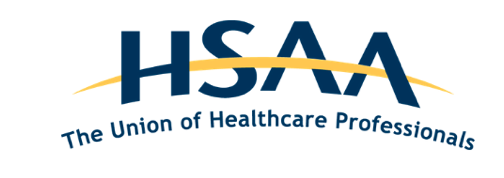Health Sciences Association of Alberta hoping to help members’ mental health
Posted on 8 February 2022 by adminis
Local Journalism Initiative Reporter
In response to increased pressure on emergency services, the province has come forward with a ten point plan to help first responders continue to be there when needed most.
“The EMS system has been under considerable pressure for about the last year, due to multiple reasons, including a sustained 30% increase in call volume, challenges with staff sick time, and increased sick time due to fatigue and COVID illness and COVID isolation requirements. So we have been under a lot of pressure,” said Darren Sandbeck, AHS Chief Paramedic. The plan includes several points that are already in place, as well as some that will be put in over the coming weeks.
Health Sciences Association of Alberta President Mike Parker is cautiously optimistic following the announcement, and said that he almost considers this a historic time.
“We have been talking about EMS resources for a long time, I would almost suggest a generation,” said Parker. “We are here because our members’ advocacy work on the threats to our public healthcare system.”
The plan includes work to manage staff fatigue, especially in communities identified as being high risk, as well as transference of low priority or non-emergency calls.
“These are typically calls that we can safely transfer off to places like the poison and Drug Information Service. And then we’re also developing processes to be able to transfer these low priority calls to Healthlink 811, when it’s appropriate to do so, and the caller will then receive advice from Healthlink,” said Sandbeck.
Other points include better reserving ambulances for when they’re needed, both by not sending them to vehicle collisions where no injury has taken place, and in changes in how transfers between facilities are handled, as some of these can be handled by identifying when patients being moved are not in need to active care while in transport.
“We continue to hire paramedics, who are in a constant hiring cycle. We’ve also opened up conversations with education institutions in Alberta that train paramedics to talk to them about the intake and the number of products that they’re able to train in a year,” said Sandbeck. “So we’re looking to hopefully increase the number of paramedics that are going into school, and therefore coming out of school.”
In the coming weeks, the other parts of the plan will be underway, including the creation of an integrated Calgary Operations Centre—not unlike the one presently in Edmonton—to help manage patient flow, and changes to how dispatchers do their call evaluation.
“Right now, if an ambulance, as an example from Airdrie. was to clear the foothills hospital after dropping off a patient, and they were the closest ambulance to any call, they would automatically be dispatched to that,” said Sandbeck. ”What’s going to happen in the future is that we will evaluate whether it’s better to actually have that Airdrie ambulance stock, respond to that call and go back to cover its home community of Airdrie. And then use another Calgary based ambulance to do that call, or whether they are most appropriate to go to that call. So this is really going to affect the way we’re able to get ambulances is back into rural communities and those communities surrounding Calgary, so that we’re better able to make decisions on where to use them. And at times, honestly sending them back to their home communities may be the best choice to make.
”Other points include automating the way that ambulances are moved to higher priority calls in the event of emergency, the creation of a five to ten year service plan, and the creation of a pilot project in Red Deer that will manage most patient transfers between facilities with dedicated transfer units, freeing up ambulances to handle emergency calls.
The HSAA and Parker feel positive about the changes being proposed, but do have concerns.
“There is nothing that is going to immediately support a decrease in response times,” said Parker, “there’s lots of work in these details that are just not clear coming out of this government. There is an opening in these talks on non-critical patient transfers that brings a highlight to privatization.”
The HSAA does not support any privatization efforts, as said in a press release. However, Sandbeck assures that this is not a part of the plan.
“So any of the 10 point plans that we’ve spoken to as components of the 10 point plan, have no privatization component within it, it is really adjusting the the manner in which we deliver service to Albertans,” said Sandbeck. “What we’re really trying to do here is to protect the EMS system for those that most critically need it.”
Leave a Reply
You must be logged in to post a comment.
